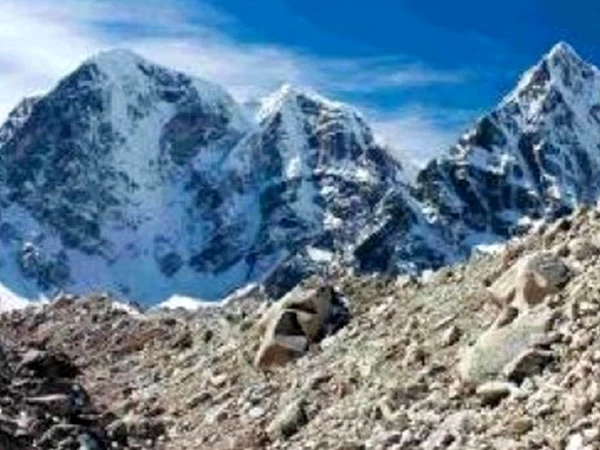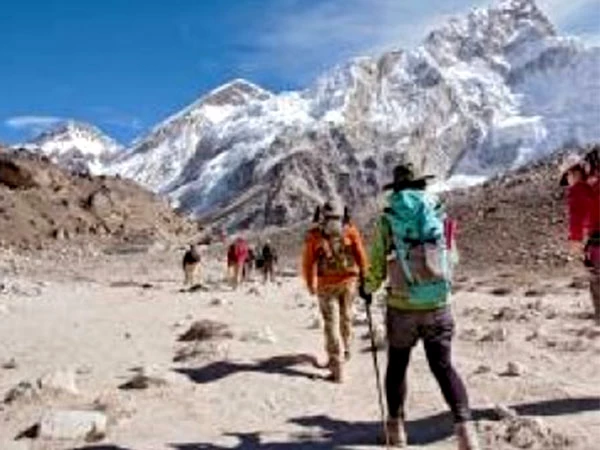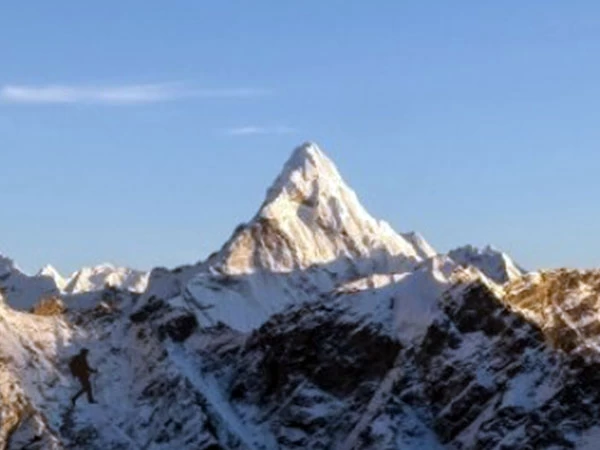Everest Base Camp Trek is truly one of the most unique and beautiful treks in the entire world. No doubt it is breathtaking and offers sublime moments of pure bliss. The trekker walks through the Khumbu Region as it leads to the base of the tallest mountain in the world, Mt Everest (8,848m). As the trail meanders through forests ascending from sub-tropical environments to the stark beauty of the alpine world, the trekker is met with faces and hospitality of one of the most famous cultures that are synonymous with Everest, the Sherpa people.
As a traveler thinks about the possibility of attempting this trek and enjoying all of the natural and cultural wonders that go along with it, some may wonder if it is necessary to have a guide, or can they do it on their own. To answer this question, it is important to have all of the facts about the trek in hand and then be able to do a real self-assessment of your skills, and abilities.
Is it required to take a guide while trekking to the Everest Base Camp?
The short answer is no, you do not need a guide. However, many find themselves unprepared for the challenges and insufficient homework as there are many rigors that go hand in hand with the joys of trekking in Nepal.
A typical day involves hiking up to 8 hours a day at elevations well over 4,000 meters (FYI there are 3.3 ft. per meter). But let's back up and really start from the beginning to get a true sense of what this trek is like for the body and mind, yes, it is beautiful, and the sights, sounds, smells, and experiences are as incredible as every tour company will tell you.
The trail begins in Lukla, at 2,840 meters. A trekker can expect to begin hiking each day around 7:30 am and hiking steadily (with some breaks of course) till lunch more or less at 12 pm. After about an hour, trekking commences till 4 pm or thereabouts when you should be arriving at a village with teahouses available to eat and stay. Within this hiking time period, there is a steady increase in elevation, though the trekker can still find the trail will ascend and descend up to 500 meters each time.
The trekker will also need to carry a daypack that can be around 6kg, with snacks, water, layers of clothes for warmth and weather, and protection from the harsh solar radiation that comes with higher elevations. Expect all kinds of weather even though the Spring and Fall are relatively stable in terms of weather patterns, the mountains can go from cold rain, to bright, hot and sunny in a matter of minutes, so proper attire is of the utmost importance.
So now we have more information on what a day on the trail can look like. Another important consideration is the altitude. The trekking itinerary is key to safe slow ascent which is paramount to giving the body a chance to acclimatize properly. The full trek should be no less than 15 days.
Trekkers have reported seeing multiple helicopter rescues because of hikers being overcome by the altitude. An appropriate itinerary is essential for managing the gain in elevation, and being in the company of a person who is medically trained to know when basic symptoms of Altitude Mountain Sickness (AMS) which is the name given to symptoms associated with what the body may produce while adjusting. AMS is the condition aroused due to exposure to lower amount of oxygen in the body due to rapid progress in elevation, specifically above 8,000 ft.
Some of the symptoms include, but not limited to: a headache, vomiting, tiredness, sleeplessness, and dizziness. AMS can progress to High Altitude Pulmonary Edema or High Altitude Cerebral Edema both of which can be fatal. This affects everyone (except those lucky few, like the Sherpa people) in different ways and at the different altitude. You cannot train your way out of experiencing symptoms. Slow progression to higher elevations is the best preventative measure, and if the symptoms become life-threatening, the rapid descent is the first line of treatment.
- The next consideration is navigating the fees and permits to enter the area. Here are a few regulations for the Sagarmatha National Park in which Mt Everest and the majority of the trek lies within.
- An entry fee of Rs.3000 per person per entry (foreigners) and NRs. 1500 per person per entry (SAARC national) must be paid at the designated ticket counter.
- Valid entry permits are available from the National Parks ticket counter at the Nepal Tourism Board, Bhrikuti Mandap, Kathmandu or Park entrance gate at Monjo.
- The entry permit is non-refundable, non-transferable and is for a single entry only.
- Entering the Park without the permit is illegal. Park personnel may ask for the permit, so visitors are requested to keep the permit with them.
To have a knowledgeable local person who can help navigate not only the trail but understands the rigors of trekking and the safety aspect of proper acclimatization is undeniable. Not to mention, being able to communicate effectively with locals is a great tool to be used at your disposal.
Now time for some self-reflection. Are you (the trekker) experienced in multi-day, high-altitude trekking for more than two weeks?
Have you (the trekker) had side-country and back-country experience navigating through remote passes, and finding the trail as it passes over rocky glacial moraines for kilometers on end?
Do you have the working knowledge of backcountry wilderness emergency first aid in case of an emergency to your own person?
If no was the answer to any of these questions, then it may be time to think about a guide. It is never wrong to want to explore the world on one's own and to create your own travels, opening up to the possibilities that lie within these adventures. Nevertheless, the Everest Base Camp Trek is not the place to try this unless you have extensive experience trekking under these conditions with sound working medical knowledge of how to ascend at high altitudes safely and what to do if there is a medical emergency.
People have obvious concerns about choosing a guide, and some just don’t like the idea. This is understandable, but there are many good companies out there and lots of guides who are excited to share their home with people just as excited to explore it. Trekking to the base of Everest isn’t a walk in the park, it is a serious endeavor and deserves the respect of being the highest mountain range on earth. It is still remote and wild, despite the stories of Snickers bars at teahouses, and 4G at basecamp.
Another important consideration when choosing to take a guide is, that in hiring a guide, you are feeding a family. Guides tend to be from the local villages and guide when it’s not farming season no matter how credentialed they are. It is common that your guide supports a family for the year from the wages earned in a season. It helps the local economy, and if there were fewer guide and porter jobs, many of these people would have to leave to other places to find viable work. This is not to sell poverty, but to put the situation in perspective. You and your tourism money are vital to the economic development of many of these rural regions. It can be part of a sustainable tourist economy.
Trekking to the Everest Base Camp is an extraordinary experience and is a great aspiration for anyone who loves to be in the mountains and enjoys the physical and mental challenges that go with it. Choosing a guide can be a great experience as you will have the comfort of being with a person who intimately knows the land, the people, and the topography.




